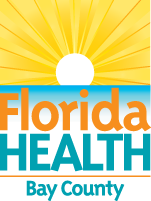It's a New Day in Public Health.
The Florida Department of Health works to protect, promote, and improve the health of all people in Florida through integrated state, county, and community efforts.
Florida’s Stores are the Front Lines of Tobacco Control
December 15, 2020
Panama City, Fla. – Floridians are encountering something that kills an average of three Floridians an hour, every hour of every day. It kills an estimated total of 32,300 Floridians each year.[1] It’s being colorfully promoted and is readily available at a place you visit frequently – your local convenience store or gas station. It’s tobacco products like cigarettes, dip and chew. And tobacco companies spend billions of dollars a year to market these addictive products at the “point of sale” – retail locations where tobacco products are sold. They increased advertising dollars at the point of sale by more than 28% in just one year.[2] When it comes to recruiting new youth to use tobacco, studies show this tactic has been effective – the likelihood of starting can more than double for youth who visit a store with point-of-sale tobacco ads at least twice a week.[3]
Tobacco executives view youth as “replacement smokers,” the next generation of customers replacing those lost by the leading cause of preventable death in our state and our nation. To attract new youth smokers the tobacco industry continues to evolve the market with new products, like electronic cigarettes and heat-not-burn devices.
E-cigarettes are not safe, especially for youth and young adults. Most e-cigarettes contain nicotine, a dangerous and addictive chemical. E-cigarette companies market their products by promoting flavors, including many that are especially appealing to youth. According to the 2016 Surgeon General’s Report on e-cigarette use among youth and young adults, flavors were the leading reason for youth e-cigarette use. Though the Food and Drug Administration (FDA) banned the sale of flavored pod or cartridge-based e-cigarettes, new, disposable products (like Puff Bars, Stig and Smok) popular among youth are not covered under that policy. By evolving product design to get around FDA regulations, the e-cigarette industry is continuing to disregard the best interest of communities. Further, while the FDA policy bans mint flavored e-cigarettes, menthol flavored e-cigarettes can still be sold.
The Bay County Health Department, along with The Bay County Tobacco-Free Partnership and Students Working Against Tobacco (SWAT) are working together to create a healthier environment at the point of sale by educating local municipalities on the importance of placing all tobacco products, including Electronic Nicotine Delivery Systems (ENDS) behind the counters and adopting a Tobacco Retail Licenses (TRL).
For more information on Point of Sale, contact the Tobacco Free Florida local representative by visiting www.tobaccofreeflorida.com/county/bay
###
About Tobacco Free Florida
The Florida Department of Heath’s Tobacco Free Florida campaign is a statewide cessation and prevention campaign funded by Florida’s tobacco settlement fund. Since the program began in 2007, more than 254,000 Floridians have successfully quit using one of Tobacco Free Florida's free tools and services. There are now approximately 451,000 fewer adult smokers in Florida than there was 10 years ago, and the state has saved $17.7 billion in health care costs. To learn more about Tobacco Free Florida’s Quit Your Way services, visit www.tobaccofreeflorida.com or follow the campaign on Facebook at www.facebook.com/TobaccoFreeFlorida or on Twitter at www.twitter.com/tobaccofreefla.
Centers for Disease Control and Prevention, National Center for Chronic Disease Prevention and Health Promotion, Division of Population Health. BRFSS Prevalence & Trends Data [online]. 2018. Accessed February 19, 2020.
“Federal Trade Commission Cigarette Report for 2018,” FTC.gov. Federal Trade Commission, 2019. https://www.ftc.gov/system/files/documents/reports/federal-trade-commission-cigarette-report-2018-smokeless-tobacco-report-2018/p114508cigarettereport2018.pdf. Accessed February 19, 2020.
Henriksen, L, et al., “A longitudinal study of exposure to retail cigarette advertising and smoking initiation,” Pediatrics126:232-238, 2010. http://pediatrics.aappublications.org/content/pediatrics/126/2/232.full.pdf?download=true. Accessed February 19, 2020.
Tobacco Company Quotes on Marketing to Kids. https://www.tobaccofreekids.org/assets/factsheets/0114.pdf . Campaign for Tobacco-Free Kids. Accessed February 19, 2020.
U.S. Department of Health and Human Services. The Health Consequences of Smoking—50 Years of Progress: A Report of the Surgeon General. Atlanta: U.S. Department of Health and Human Services, Centers for Disease Control and Prevention, National Center for Chronic Disease Prevention and Health Promotion, Office on Smoking and Health, 2014. Accessed February 19, 2020.
U.S. Department of Health and Human Services. E-Cigarette Use Among Youth and Young Adults. A Report of the Surgeon General. Atlanta, GA: U.S. Department of Health and Human Services, Centers for Disease Control and Prevention, National Center for Chronic Disease Prevention and Health Promotion, Office on Smoking and Health, 2016. Accessed February 19, 2020.




Connect with DOH